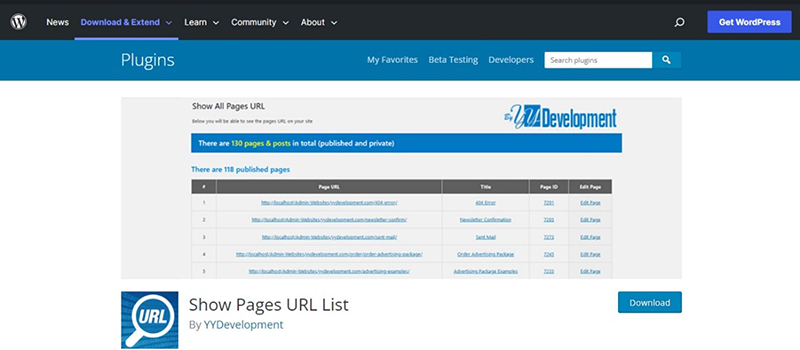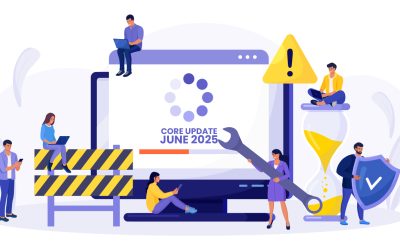You might have come across pages that aren’t intended to be on your website but are somehow found by Google because they have the potential to rank well or receive a lot of search traffic. Housing orphan pages can undermine your search engine optimization (SEO) efforts since neither a human visitor nor a bot have given them any attention. Therefore, firms must locate their issues and resolve them right away with the aid of a search engine optimization company.
What Are Orphan Pages and Why Are These Bad for SEO
Orphan pages are those on a website that have no links leading to them. An orphan page is completely isolated from the rest of the Internet, so the only way to access it is by entering the exact URL. Normally, pages are found by search engine crawlers either by clicking on a link from another website or by looking at their URLs in your sitemap. No matter how well-optimized the content is, if your page does not appear through these channels, you are losing out on a ranking opportunity. Orphan pages can emerge for a number of reasons, such as outdated pages that have been delinked but are still published, architectural faults with the site, unsold but still-available goods, and the CMS producing new unidentified URLs as part of its page designs etc. Without internal links, these pages cannot be accessed from anywhere on your website. This makes finding specific pages much more challenging but not impossible. Orphan pages can be a major SEO issue as they result in crawl waste, minimal traffic, and little to no page rank. When low-quality pages use a huge part of your crawl budget, it takes more resources to get Google to visit the vital pages. Moreover, if Google can’t naturally connect the pages on your website, its crawl rate will usually slow down and it can also affect the user experience of your website. Another SEO issue with orphan pages is that Search engines understand authority, relevance, and quality through links. Without it, pages won’t have much page authority and are less likely to rank well. It truly assists you in improving your site’s SEO performance if you incorporate orphan pages into your website structure once again.
Reasons Why Orphan Pages Occur
Non-indexable orphan pages, such as those for a PPC landing page or a campaign that targets a particular audience, are common. However, there are instances where orphan pages are created accidentally and omitted from SEO audits. The following are some typical causes of orphan pages:
- Bad housekeeping: Deleting the page that was linked to the orphan page.
- Difficulty tracking: You risk losing track of pages and their links if your team is constantly upgrading and doing site migrations.
- Inadequate updates: Keeping out-of-date campaign or landing pages after they are no longer required, such as pages for past events, discontinued products, and one-time deals, and not relocating them to another area of the website, such as an archive page can lead to orphan pages.
How to Identify Orphan Pages and Fix Them
- Get a complete list of the pages on your existing website: Since orphan pages are by definition not linked to from any domain page, pointing your preferred website audit tool at your home page and expecting it to identify orphan site pages won’t work. Never will the crawler discover them. The full list of site URLs that the crawler should look at must be specified instead. The URL list can be obtained in several ways:
-
- Utilize your sitemap file: The sitemap is a file that is normally positioned at the root of your domain to assist search engine bots in comprehending the content of your site, how frequently you update it, and how to effectively display your material on SERPs. Your sitemap is dynamically updated whenever you add a new page or post to your content management system (CMS), but before utilizing this strategy, make sure your sitemap contains the complete list of your pages.
-
- Get a list of website URLs: If a sitemap is not an option, such as if it does not include a list of all pages, you can create the list using your content management system (CMS). To export a list of site URLs as a CSV file on WordPress, for instance, you can install a simple plugin like List URLs. You can also request a copy of the CMS log, which shows a list of all the pages that were provided to your visitors, from your IT department. Filter on unique URLs after loading the list into Excel. Copy the entire list and paste it into your crawl setup once you have it.
- Conduct a website crawl for pages with zero inbound links: Search for pages on a website that have no inbound internal links. Set up the audit rule to catch sites without at least one inbound internal link to help you find orphan pages. Create a reoccurring crawl when configuring the audit to capture any future unlinked pages. Be aware that if you rely on a URL list, your CMS should provide you with an updated list.
- Examine the audit findings: Re-log into ContentIQ to view the audit findings after it has been finished. Find the orphan pages and verify their goals: Do they actively promote sponsored, social, or referral campaigns? Have they got reliable backlinks? Do they receive a lot of onsite search traffic from site visitors? To evaluate traffic sources, visits and page views, entry and exit behaviors, use your web analytics system. A campaign page is developed for a specific period of time, to aid in traffic acquisition. After the campaign is over, the page loses its appeal and can be taken off the website.
- Fix any orphan pages you find: Once you are aware of the orphan page’s function and how it supports the promotion of your website and marketing objectives, you may decide whether or not to take any further action with the page:
- If it’s critical for site visitors to find it through surfing, link to it from other internal pages.
- If it’s no longer required, archive it.
- If it’s performing a purpose for business and there’s no need to link to the page internally, leave it alone.
- Rerun the audit from time to time to find any new orphan pages: It is necessary to examine the site frequently for new problems because pages can become orphaned over time by adding new content and failing to connect to it or by unintentionally removing links to pages buried deeply in the site structure. As previously mentioned, you can program ContentIQ to rerun your audit on a regular basis by scheduling a crawl and it helps in finding and fixing orphan pages on websites.
Although orphan pages are an SEO concern, the good news is that these problems can be found and resolved. To locate them, you can use orphan page checkers and tools, but it’s advisable to enlist the help of people who are experts from search engine optimization company in dealing with orphan pages and other technical SEO issues. Like orphan pages, every aspect of a website can affect how well it performs in search engine results. So, monitoring your website is always important.
| MedResponsive is a leading search engine optimization company in the US that offers digital marketing and SEO solutions for businesses in a variety of industries. Call us at (800) 941-5527 to discuss your marketing challenges and arrange a FREE consultation. |





